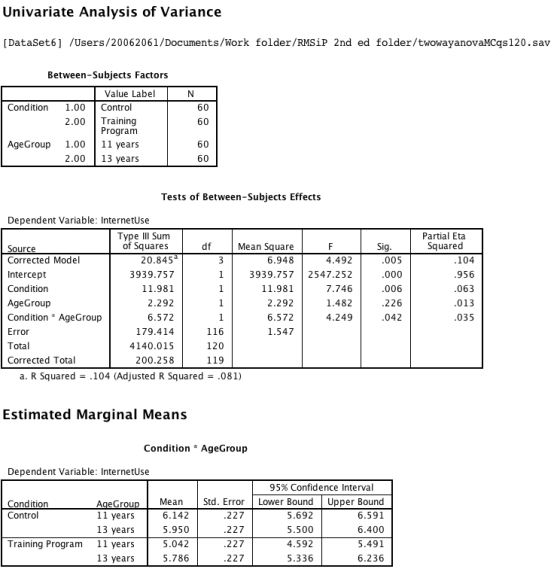Multiple Choice
A developmental psychologist developed a training program to encourage children to reduce their Internet usage.To examine its efficacy he recruited a sample of 120 children - of whom 60 were aged 11 years and 60 were aged 13.Half of the participants were randomly assigned to the training program and the amount of online usage was measured after one month.Findings were subjected to two-way ANOVA, from which the output was as follows:  Which of the following statements is true?
Which of the following statements is true?
A) The nonsignificant main effect for age group tells us we can ignore age.
B) The nonsignificant main effect for age group tells us we can ignore age so long as our alpha level is not significant.
C) The nonsignificant main effect for age group tells us we can ignore age so long as our alpha level is less than .225.
D) Despite the nonsignificant main effect for Age this IV is still relevant because it is implicated in a significant interaction effect.
E) Age is relevant because maturation effects may lead to central limits on randomization.
Correct Answer:

Verified
Correct Answer:
Verified
Q139: Which of the following is not a
Q140: When Brocki and Weardon (2006)critique researchers who
Q141: "Selecting part of the sample so that
Q142: "The process through which a researcher reflects
Q143: "A distribution-free test that is used to
Q145: Which of the followings statements is true
Q146: Which of the following is not part
Q147: "The hypothetical distribution of expected differences between
Q148: A developmental psychologist developed a training program
Q149: "An approach to research that focuses on